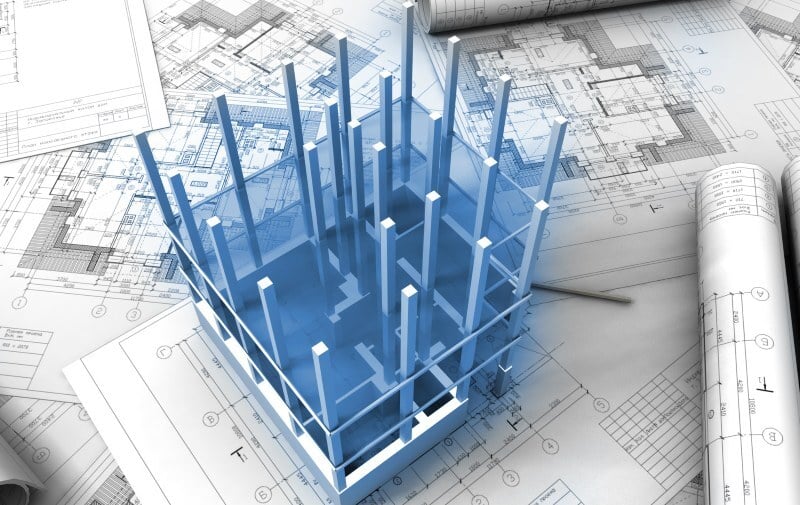
The growing adoption of BIM and Revit across the architectural field is driven by their ability to streamline workflows, manage errors, and improve project outcomes. Architects proficient in BIM and Revit are increasingly in demand, as these tools allow for better project management, cost control, and resource optimization.
As BIM becomes a standard practice in most countries, only skilled professionals will be in a position to adapt to the changes and make a place for themselves.
What is BIM?
BIM is a digital design process used in the AEC industries to create, manage, and share information. It involves creating a 3D model that represents a building's physical and functional characteristics, integrating various aspects like structure, systems, and materials. Designing with BIM allows for a more collaborative approach, enabling stakeholders to visualize projects and manage data efficiently. It enhances coordination, reduces errors, and streamlines workflows, improving efficiency and resulting in better-quality projects.
What is Revit?
Revit, a powerful BIM software by Autodesk, is designed specifically for architects. It is one of the best BIM software programs that lets you create detailed 3D models with construction details and material specifications. Seamlessly integrating with BIM processes, Revit has become an essential tool for today’s architects. If you’re wondering how to learn BIM & Revit online, know that there are Revit courses available that can help you master this software.
Top 10 Reasons Why Architects Should Learn BIM & Revit
With the help of a comprehensive BIM training, architects can create detailed digital representations of building models along with all relevant information throughout the planning and development stage. They support more efficient planning and execution of projects, along with realistic evaluation of costs and timelines.

1. Central data management
BIM and Revit features centralized data management for all building information. The coordination model goes beyond basic lines, surfaces, and volumes, incorporating detailed properties like dimensions, component locations, thermal insulation, and more. This makes it easy to generate the necessary evaluations and analyses directly from the model.
2. Planning security for complex designs
Using BIM and Revit allows for efficient planning even in challenging conditions, enabling architects and engineers to easily align with the construction timeline. They simplify the complex planning process when building a structure in multiple phases.
3. Error analysis
The models created in BIM and Revit enable early identification of discrepancies across all disciplines involved in a project. By integrating data from various teams, they ensure that potential issues are detected and addressed in the early stages. This approach helps avoid costly mistakes, reduces rework, and enhances collaboration.
4. Better control
BIM streamlines project control throughout the entire lifecycle of a building. With BIM and Revit, all stakeholders can access real-time information from anywhere, ensuring seamless collaboration and transparency. This approach makes the entire process traceable, allowing teams to monitor progress, track changes, and quickly resolve any issues. As a result, BIM fosters accountability and improves decision-making.
5. Improved communication
The coordination and adherence to deadlines, costs, and quality standards improve using BIM and Revit, particularly when large teams collaborate on a single project from different locations. By providing a centralized platform for all stakeholders, they ensure that agreements are clearly defined and consistently followed throughout the project.
6. Streamlined information management
Due to BIM and Revit, seamless information and knowledge sharing among project participants has become effective. This makes successful project management possible, from the planning and development stages of a project all the way up to facility management.
7. Better quality and efficiency
The BIM and Revit work method offers significant potential to enhance quality and efficiency throughout the entire construction and operation process. Rather than relying on separate execution plans and spending time on corrections, all team members can access a shared data foundation and make real-time updates.
8. Added value through new project management opportunities
BIM and Revit allow for structural and process simulations throughout the entire lifecycle of a project. This boosts efficiency, helps conserve resources, and reduces environmental impact. As a result, the building's value is improved and preserved over time.
9. Schedule and cost security
BIM and Revit enhance the security of large-scale projects by allowing for real-time, verifiable updates on costs and deadlines, ensuring greater accuracy and control throughout the process.
10. Competitive advantage
In some countries, BIM and Revit have already become the norm for project execution. Companies adopting BIM today are future-proofing their operations and positioning themselves to compete effectively on an international scale. These BIM jobs also ensure a consistent average salary growth.
Essential Benefits of Learning BIM & Revit for Architects
BIM and Revit have entirely changed how architects operate. These tools offer robust capabilities that boost design quality, teamwork, and project delivery. Through an integrated process, BIM and Revit software allow a synchronised workflow and better communication across all project stages. Let’s take a look at the benefits:

1. Premium Visualization
BIM and Revit enable architects to generate detailed and realistic 3D visualisations straight from the model. This helps them put together compelling presentations that help clients and other stakeholders understand the project better before construction begins.
2. Improved Accuracy
BIM and Revit software features precise geometric calculations that help architects avoid common errors associated with manual coordination and measurement. They ensure every detail is precisely calculated, reducing discrepancies and improving design integrity.
3. Integrated Design Process
BIM and Revit enable a comprehensive design process that combines architectural design, structural engineering, and MEP into one model. This convergence enhances collaborative efforts and efficiency across different disciplines, producing a more unified and accurate project outcome.
4. Efficient Documentation
With BIM and Revit, creating architectural plans and lists of what you need gets a whole lot easier. Any time you tweak the design, these tools auto-update all your drawings and specifications, which means less chance of goof-ups that can happen with manual revisions.
5. Cost and Time Savings
When you feed data into BIM and Revit, you get exact quantity takeoffs and cost estimates. This helps identify ways to save money and keep projects within budget. Moreover, these tools help create construction schedules matching the project timeline, which leads to better project phasing and resource management.
6. Sustainability Analysis
The tools available within BIM and Revit include features for assessing environmental impact and energy consumption. Such features help architects design consciously during the planning stage.
How BIM & Revit Give You a Competitive Edge in the Job Market?
BIM and Revit are rapidly gaining popularity in both small and large-scale projects worldwide. Governments, multinational companies, and clients are increasingly focusing on BIM adoption to deliver projects more efficiently. Architects who upskill in BIM will stay ahead of this transformation, gaining a competitive advantage in the job market. This expertise can also lead to average salary growth, with BIM-skilled architects typically making 1.5 times more than their peers.
How Can Novatr’s BIM & Revit Course Help You Become a BIM-Ready Architect?
Novatr’s BIM certification course aims to help architects, particularly those in the USA, launch successful BIM careers regardless of their experience level or technical expertise. Through hands-on projects and mentorship from industry experts, this all-inclusive course empowers architects to master 10+ BIM software and land lucrative career opportunities.
Significant aspects of the program:
1. Career-Driven Support
Get personalized feedback from industry recruiters and career-focused mentorship.
2. Globally Recognized Curriculum
Developed with the expertise of 200+ professionals and aligned with ISO 19650 standards.
3. Affordable
Budget-friendly pricing with payment plans, including up to 24-month installments for U.S. learners.
4. Industry Experts at Your Fingertips
Learn from professionals at renowned firms like AECOM, Populus, Henning Larsen, and Zaha Hadid Architects.
5. Robust Learning
80+ hours of expert-led classes, AI-powered query support, and weekly live sessions.
6. BIM Certification
Gain an internationally recognized certification and a professional portfolio to boost your career.
7. Interactive Learning
A gamified, AI-powered Learning Management System to keep you motivated and on track.
By joining Novatr, you'll not only master the technical skills but also build a professional network of over 6,000 architects worldwide. Upon course completion, you will receive a globally recognized BIM certification, a professional-level portfolio, and access to new job opportunities. Enroll now for the 2025 cohort!
Conclusion
The established names in the architecture industry worldwide strongly prefer architects with Revit and BIM expertise. The ongoing evolution and a growing focus on sustainable and innovative building methods point to a brighter future for architects. With the right training and skills, architects can secure top roles in the industry, earn higher salaries, and future-proof their careers.
Join the BIM Professional Course for Architects by Novatr and explore this course today.
Visit our Resources Page to explore the latest developments and trends in the AEC industry.
FAQs
1. How does BIM differ from traditional CAD software?
BIM differs from traditional CAD software primarily in the depth of information it handles. It encompasses design, data, and other attributes of every component in the model, allowing for more accurate simulations, analysis, and collaboration. This makes BIM an effective and data-rich platform, whereas traditional CAD is more static and cannot often manage complex data relationships or provide real-time updates.
2. What are the benefits of using BIM over 2D drafting?
Some of the benefits of using BIM are:
- Increased accuracy
- Improved efficiency
- Cost and time savings
- Better management
- Enhanced collaboration
3. Does learning BIM increase job opportunities?
Yes. As the AEC industries continue to embrace digital tools for design, planning, and management, professionals with BIM expertise will be highly preferred. BIM proficiency is increasingly becoming a requirement for many roles, especially in design firms, construction companies, and government agencies.
4. What industries beyond architecture use BIM?
- Construction
- Engineering
- Facility Management
- Urban Planning and Infrastructure
5. Why do firms prefer architects with BIM skills?
As more firms adopt BIM, architects with these skills are more likely to stay relevant and adaptable to industry trends, particularly as governments and large organizations push for BIM adoption in public infrastructure projects.
Was this content helpful to you



.jpg)







